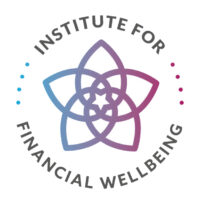I’m sure that many of us feel like Heath Ledger’s Joker from Dark Knight when it comes to our financial plans and goals, like a dog chasing cars!
My route to understanding my goals and whether I could achieve them is rather circuitous and involves a lot of pedalling and begins rather bizarrely with a charity bike ride from London to Paris in 2014. I had made a huge change to my life when I reached 40 or so and stopped smoking and started looking after myself, going to the gym and eating better. I also made the decision in 2013 to leave the target-driven world of employment and set up my own business, as I wanted to really help clients and take control of my life.
Needless to say my partner (now wife) Alex and I loved the ride and I felt like I had found my sport at the not so tender age of 46. I took on crazier and crazier challenges including Newcastle to London in 24 hours and all three ascents of Ventoux. In 2017 I saw my first Haute Route video on Facebook and knew that I needed to sign-up, it’s as near to a world pro-race as you can get and I chose to do 7 days in the Alps for my 50th birthday.
This meant taking a more structured route to my training. As I needed all the help I could get, I read Joe Friel’s Cyclist Training Bible and started using Training Peaks. This is software designed to track your training over the year and allows you to set goals and monitor how much you are improving. A few months after using this I realised that this kind of analysis would be extremely useful for my clients.
Cash Flow Modelling has been around for a while now and I had toyed with using things like Voyant but baulked at the cost and how complicated it looked. After some research, three years ago, I decided to use Cash Calc and I have never looked back.
One of the principles of Financial Wellbeing is a clear path to identifiable objectives, as well as having financial options, and what I have witnessed is the massive difference Cash Flow Modelling can make to this. Many clients I speak to are busy people with little interest in tax wrappers and funds or other dry documents that we feed them. What they want is a clear picture of what they’ve got in place now and whether it will be enough to give them what they want when they need it – that’s what they are prepared to pay for.
Most cash flow software will show you some sort of yearly breakdown that can take into account different income streams and different lump sums that may be available. We don’t take our retirement income in a set way anymore, so being told a monthly amount you will get in retirement is no longer relevant. What clients want to know is will they run out of money? They want to know how much they need to put in and they need to take into consideration all forms of income including state and final salary pensions.
So how does this translate into Financial Wellbeing?
Shortly after starting to use the software I was reviewing two separate clients who had very similar reactions. Firstly, my old friend from HBOS days, Ian, said he could literally kiss me when I said he could retire at 55 and a younger client Eamonn thought he was going to have to work until 67 until I told him he could retire at 60.
To me Cash Flow is like a “Satellite Navigation” (or should that read “Wealth Navigation”) for your financial wellbeing, if you don’t know where you are going, how do you know when you’ve got there?

